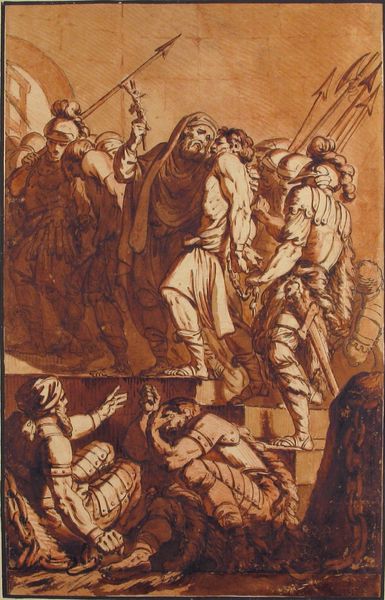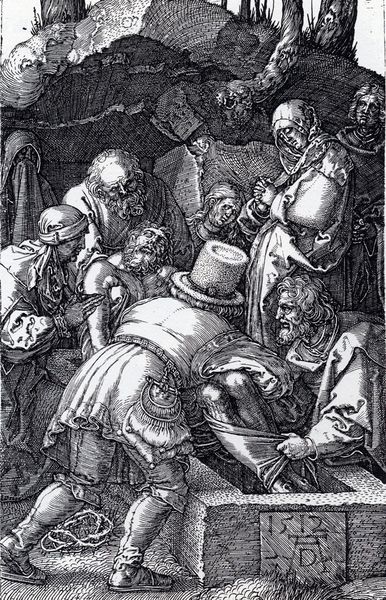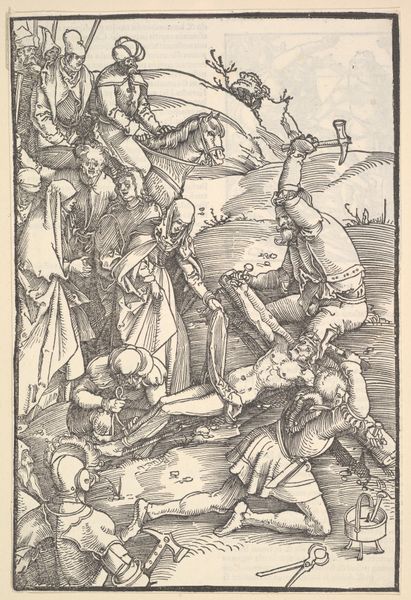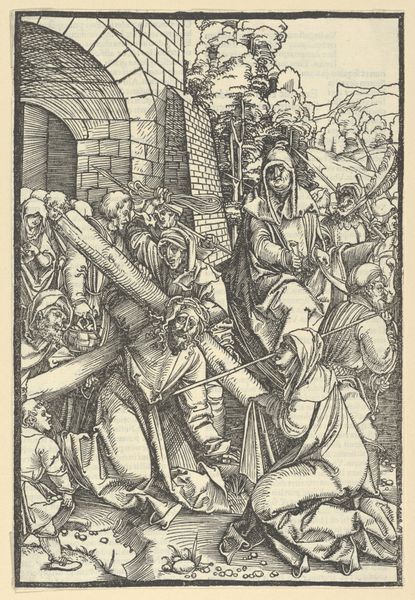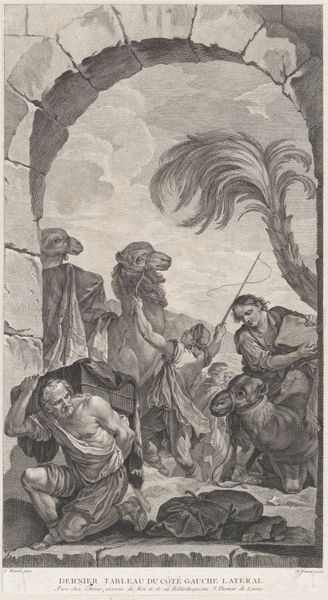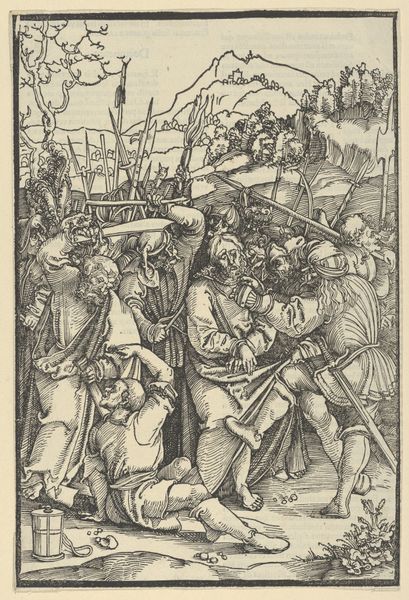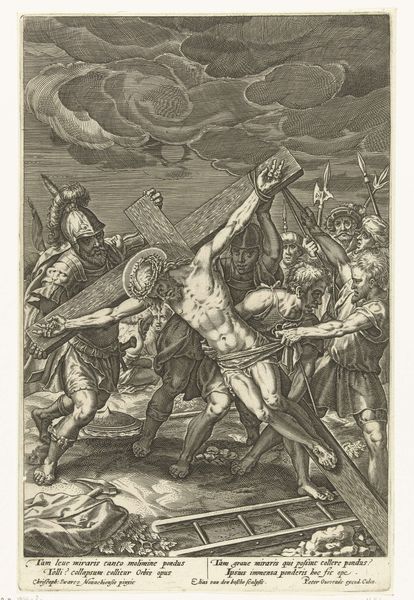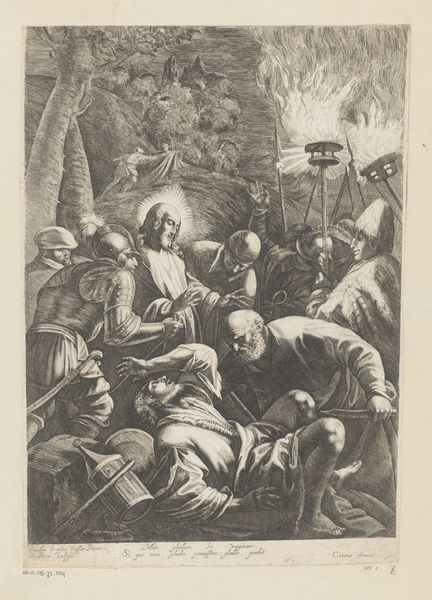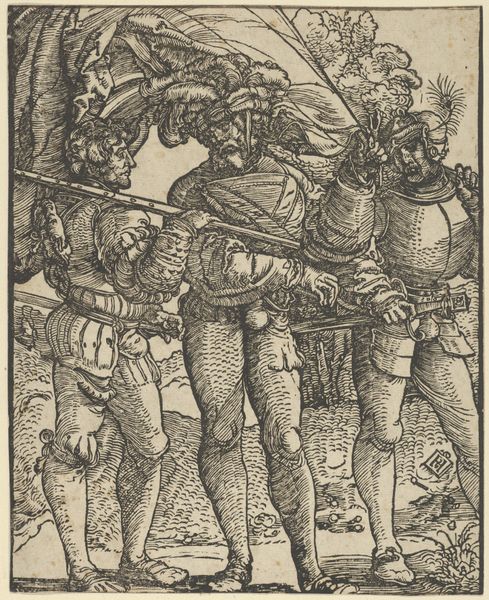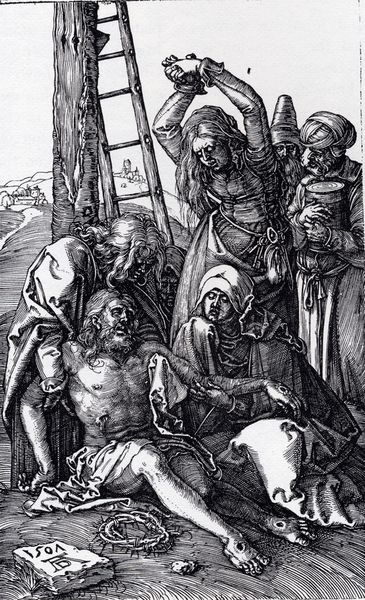
print, engraving
#
narrative-art
# print
#
charcoal drawing
#
figuration
#
jesus-christ
#
soldier
#
christianity
#
history-painting
#
northern-renaissance
#
engraving
#
christ
Copyright: Public domain
Editor: Here we have Albrecht Durer's "Betrayal Of Christ," created in 1508. It's an engraving, and I am immediately struck by the sheer intensity of the scene – the tightly packed figures, the aggressive gestures. There's so much visual drama crammed into this relatively small print. What do you see in this piece, and how does its imagery function? Curator: This engraving pulsates with the symbolic language of betrayal and violence. Consider the torch held aloft – not as a beacon of light, but a searing symbol of sudden exposure, a forced awakening to truth, however brutal. Durer masterfully orchestrates figures laden with visual weight, each action contributing to a cultural memory. How do the specific poses resonate, would you say? Editor: The one with the raised sword and open mouth suggests blind aggression, but I'm less clear on others. Is it just me, or is there a strong tension between the minute detail of each character's face, compared with the frenzied, confusing arrangement of the figures together? Curator: Precisely. Detail, for Durer, often serves to underscore the humanity *within* even the most chaotic moments. Observe Judas's embrace; it's a sign of intimacy twisted, the inversion creating potent psychological unease. Ask yourself: what societal anxieties about trust, or faith, might this image trigger, then and now? The placement of figures relative to Christ invites your eye on a kind of torturous journey; notice how it keeps moving in this turbulent circle of deceit. What does this imply? Editor: It feels incredibly claustrophobic, almost trapping the viewer within the betrayal itself. So, Durer uses familiar symbols like the torch and the kiss, not just to illustrate the biblical story, but to force us to confront our own potential for darkness? Curator: Precisely. The imagery speaks across centuries; Durer taps into something profoundly human – our capacity for both love and betrayal, illuminated by symbols and made palpable through artistic vision. What have you taken away from seeing that link more clearly? Editor: I see how Durer uses the image not just to depict but to *activate* within us the emotional weight of the betrayal, to invite contemplation about human frailty itself. Curator: A fitting interpretation! Every symbol placed resonates; in turn, this resonates with each viewer across time and place.
Comments
No comments
Be the first to comment and join the conversation on the ultimate creative platform.

